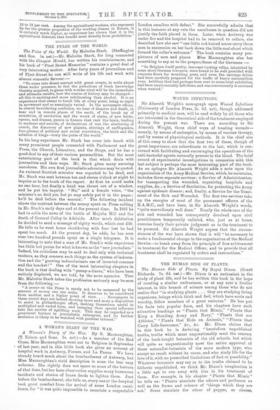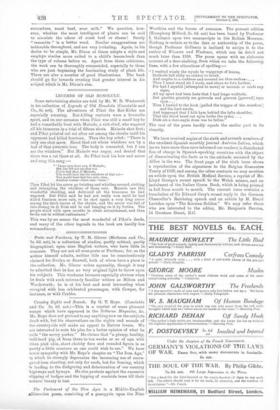THE HUMAN SIDE OF PLANTS.
The Human Side of Plants. By Royal Dixon. (Grant Richards. 7s. 6d. net.)—Mr. Dixon is an enthusiast in the study of plant life, and he has written this book in the hope of creating a similar enthusiasm, or at any rate a livelier interest, in this branch of science among those who do not realize that "in studying plants . . . they are studying living organisms, beings which think and feel, which have souls and worship, fellow members of a great universe." He has put his facts into popular form, and his chapters have such attractive headings as "Plants that Mimic," "Plants that Keep a Standing Army and Navy," "Plants that are Athletes," "Plants that Ride on Animals," "Plants that Carry Life-Insurance," &c., &c. Mr. Dixon claims that in this book he is declaring "heretofore unpublished truths, truths which must unquestionably meet the censure of the book-taught botanists of the old schools, but which will quite as unquestionably meet the entire approval of those naturalist-botanists of the more modern type, who accept no result without its cause, and who study life for the love of it, with no prescribed limitations of fact or possibility." Whatever botanists may say as to the truths claimed to be hitherto unpublished, we think Mr. Dixon's imagination is a little apt to run away with him in his treatment of them. For example, in his chapter "Plants that Mimics" he tells us: "Plants simulate the odours and perfumes as well as the forms and colours of 'things which they are not.' Some simulate the odour of pepper, or cheese, enetiinberS, ieat bad, '•sour milk." We question, how- ever, whether the most intelligent of plants can be said to simulate the odour of roast beef or cheese! Surely " resemble " is a better word. Similar exaggerations are noticeable throughout, and are very irritating. Again, in his desire to be simple, Mr. Dixon at times adopts a style and employs sbniles more Suited tO a child's lesson-book than the type of volume before us. Apart from these criticisms, the work can be thoroughly commended, especially to those who are just beginning the fascinating study of plant life. There are also a•nutaber' Of .good illustrations. The book should go far' towards creating that greater interest in his ,subject which is Mn Dixon's aim.















































 Previous page
Previous page